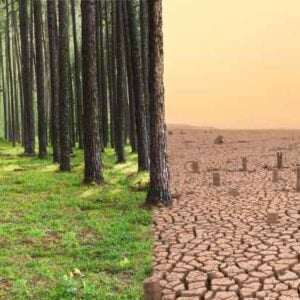As extreme weather events intensify due to climate change, anticipating hazards before they strike has become critical for saving lives and protecting economies. Central to this capability is climate information, collected through weather stations, gauges, and sensors, which is transformed into actionable knowledge about climate trends, vulnerabilities, and impacts. This data supports reliable weather forecasts, early warning systems, and climate services for sectors ranging from agriculture to healthcare.
Beyond immediate alerts, climate information underpins long-term adaptation planning and risk-informed development. By providing evidence on vulnerabilities and potential impacts, countries can prioritize actions, strengthen resilience, and implement measures that reduce the societal and economic costs of climate-related disasters. Despite its value, investments in climate information services and early warning systems remain insufficient, though evidence shows these systems are among the most cost-effective climate adaptation measures, with returns up to tenfold and significant reductions in disaster-related losses.
Countries are increasingly recognizing the importance of climate information and early warning systems in national climate plans, including Nationally Determined Contributions (NDCs) and National Adaptation Plans (NAPs). Governments are investing in observation networks, forecasting systems, and early warning infrastructure, integrating climate data into planning for sectors such as agriculture, energy, transportation, and disaster risk management. Robust climate data allows governments to assess vulnerabilities, design targeted adaptation measures, and ensure national strategies are grounded in scientific evidence.
Many developing countries, however, lack the resources and infrastructure to maintain modern observation networks or analyze climate data effectively. The Systematic Observations Financing Facility (SOFF), established in 2021, addresses this gap by supporting Least Developed Countries (LDCs) and Small Island Developing States (SIDS) with grant-based finance and technical assistance to improve observation capacity and comply with Global Basic Observing Network (GBON) standards. Countries including Ethiopia, Rwanda, Tanzania, and the Solomon Islands have benefited from SOFF support, upgrading weather stations, training staff, and enhancing data reliability for global exchange.
Complementary investments, such as the $103 million Green Climate Fund grant for early warning systems in seven climate-vulnerable countries, are directly benefiting millions of people. Across the world, countries are leveraging climate information to strengthen early warning systems, provide sector-specific advisories, and plan for climate risks. In Georgia, modern monitoring equipment is supporting a multi-hazard early warning system; in Uzbekistan, a National Framework for Hydrometeorological and Climate Services guides cross-sectoral decision-making; and in northern Pakistan and Nepal, high-tech early warning systems are helping communities respond to glacial lake outburst floods.
Practical applications of climate information extend to smallholder farmers in countries like Zimbabwe and Malawi, where tailored weather advisories are improving crop and livestock management and enhancing food security amid changing rainfall patterns. Access to timely, reliable climate data is no longer optional—it is essential for saving lives, protecting livelihoods, and informing development decisions.
As climate risks mount, the need for expanded investment and scaled-up financing in climate information and early warning systems is clear. UNDP is supporting these efforts through 43 projects funded by the Green Climate Fund, Global Environment Facility, and SOFF, providing timely climate data and early warnings for over 27 million people, more than half of them women. Strengthened climate information systems are proving to be practical, high-impact investments that build resilient, data-driven climate action globally.






